Sebastian Feld
LMU Munich
DeQompile: quantum circuit decompilation using genetic programming for explainable quantum architecture search
Apr 11, 2025Abstract:Demonstrating quantum advantage using conventional quantum algorithms remains challenging on current noisy gate-based quantum computers. Automated quantum circuit synthesis via quantum machine learning has emerged as a promising solution, employing trainable parametric quantum circuits to alleviate this. The circuit ansatz in these solutions is often designed through reinforcement learning-based quantum architecture search when the domain knowledge of the problem and hardware are not effective. However, the interpretability of these synthesized circuits remains a significant bottleneck, limiting their scalability and applicability across diverse problem domains. This work addresses the challenge of explainability in quantum architecture search (QAS) by introducing a novel genetic programming-based decompiler framework for reverse-engineering high-level quantum algorithms from low-level circuit representations. The proposed approach, implemented in the open-source tool DeQompile, employs program synthesis techniques, including symbolic regression and abstract syntax tree manipulation, to distill interpretable Qiskit algorithms from quantum assembly language. Validation of benchmark algorithms demonstrates the efficacy of our tool. By integrating the decompiler with online learning frameworks, this research potentiates explainable QAS by fostering the development of generalizable and provable quantum algorithms.
Profiling quantum circuits for their efficient execution on single- and multi-core architectures
Jul 17, 2024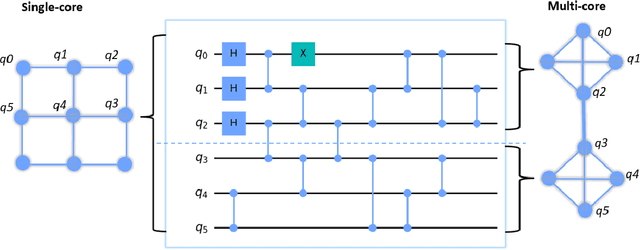
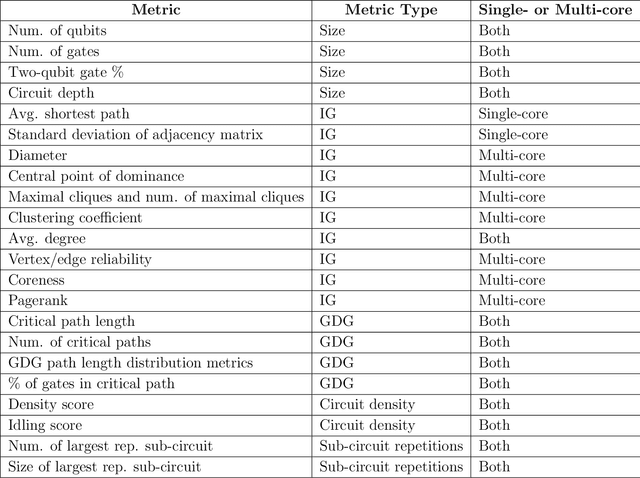
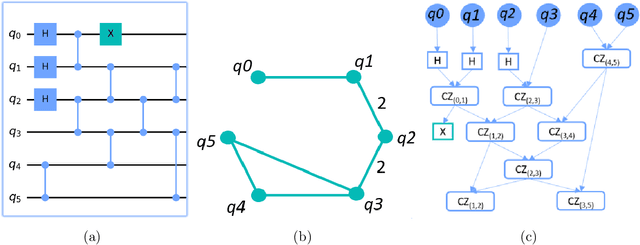

Abstract:Application-specific quantum computers offer the most efficient means to tackle problems intractable by classical computers. Realizing these architectures necessitates a deep understanding of quantum circuit properties and their relationship to execution outcomes on quantum devices. Our study aims to perform for the first time a rigorous examination of quantum circuits by introducing graph theory-based metrics extracted from their qubit interaction graph and gate dependency graph alongside conventional parameters describing the circuit itself. This methodology facilitates a comprehensive analysis and clustering of quantum circuits. Furthermore, it uncovers a connection between parameters rooted in both qubit interaction and gate dependency graphs, and the performance metrics for quantum circuit mapping, across a range of established quantum device and mapping configurations. Among the various device configurations, we particularly emphasize modular (i.e., multi-core) quantum computing architectures due to their high potential as a viable solution for quantum device scalability. This thorough analysis will help us to: i) identify key attributes of quantum circuits that affect the quantum circuit mapping performance metrics; ii) predict the performance on a specific chip for similar circuit structures; iii) determine preferable combinations of mapping techniques and hardware setups for specific circuits; and iv) define representative benchmark sets by clustering similarly structured circuits.
KetGPT - Dataset Augmentation of Quantum Circuits using Transformers
Feb 23, 2024Abstract:Quantum algorithms, represented as quantum circuits, can be used as benchmarks for assessing the performance of quantum systems. Existing datasets, widely utilized in the field, suffer from limitations in size and versatility, leading researchers to employ randomly generated circuits. Random circuits are, however, not representative benchmarks as they lack the inherent properties of real quantum algorithms for which the quantum systems are manufactured. This shortage of `useful' quantum benchmarks poses a challenge to advancing the development and comparison of quantum compilers and hardware. This research aims to enhance the existing quantum circuit datasets by generating what we refer to as `realistic-looking' circuits by employing the Transformer machine learning architecture. For this purpose, we introduce KetGPT, a tool that generates synthetic circuits in OpenQASM language, whose structure is based on quantum circuits derived from existing quantum algorithms and follows the typical patterns of human-written algorithm-based code (e.g., order of gates and qubits). Our three-fold verification process, involving manual inspection and Qiskit framework execution, transformer-based classification, and structural analysis, demonstrates the efficacy of KetGPT in producing large amounts of additional circuits that closely align with algorithm-based structures. Beyond benchmarking, we envision KetGPT contributing substantially to AI-driven quantum compilers and systems.
qgym: A Gym for Training and Benchmarking RL-Based Quantum Compilation
Aug 01, 2023Abstract:Compiling a quantum circuit for specific quantum hardware is a challenging task. Moreover, current quantum computers have severe hardware limitations. To make the most use of the limited resources, the compilation process should be optimized. To improve currents methods, Reinforcement Learning (RL), a technique in which an agent interacts with an environment to learn complex policies to attain a specific goal, can be used. In this work, we present qgym, a software framework derived from the OpenAI gym, together with environments that are specifically tailored towards quantum compilation. The goal of qgym is to connect the research fields of Artificial Intelligence (AI) with quantum compilation by abstracting parts of the process that are irrelevant to either domain. It can be used to train and benchmark RL agents and algorithms in highly customizable environments.
NISQ-ready community detection based on separation-node identification
Dec 30, 2022Abstract:The analysis of network structure is essential to many scientific areas, ranging from biology to sociology. As the computational task of clustering these networks into partitions, i.e., solving the community detection problem, is generally NP-hard, heuristic solutions are indispensable. The exploration of expedient heuristics has led to the development of particularly promising approaches in the emerging technology of quantum computing. Motivated by the substantial hardware demands for all established quantum community detection approaches, we introduce a novel QUBO based approach that only needs number-of-nodes many qubits and is represented by a QUBO-matrix as sparse as the input graph's adjacency matrix. The substantial improvement on the sparsity of the QUBO-matrix, which is typically very dense in related work, is achieved through the novel concept of separation-nodes. Instead of assigning every node to a community directly, this approach relies on the identification of a separation-node set, which -- upon its removal from the graph -- yields a set of connected components, representing the core components of the communities. Employing a greedy heuristic to assign the nodes from the separation-node sets to the identified community cores, subsequent experimental results yield a proof of concept. This work hence displays a promising approach to NISQ ready quantum community detection, catalyzing the application of quantum computers for the network structure analysis of large scale, real world problem instances.
Black Box Optimization Using QUBO and the Cross Entropy Method
Jun 24, 2022


Abstract:Black box optimization (BBO) can be used to optimize functions whose analytic form is unknown. A common approach to realize BBO is to learn a surrogate model which approximates the target black box function which can then be solved via white box optimization methods. In this paper we present our approach BOX-QUBO, where the surrogate model is a QUBO matrix. However, unlike in previous state-of-the-art approaches, this matrix is not trained entirely by regression, but mostly by classification between 'good' and 'bad' solutions. This better accounts for the low capacity of the QUBO matrix, resulting in significantly better solutions overall. We tested our approach against the state-of-the-art on four domains and in all of them BOX-QUBO showed significantly better results. A second contribution of this paper is the idea to also solve white box problems, i.e. problems which could be directly formulated as QUBO, by means of black box optimization in order to reduce the size of the QUBOs to their information-theoretic minimum. The experiments show that this significantly improves the results for MAX-$k$-SAT.
Predictive Collision Management for Time and Risk Dependent Path Planning
Nov 26, 2020

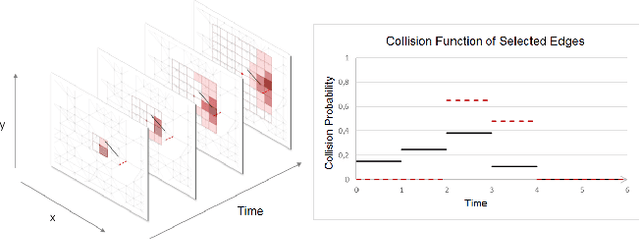
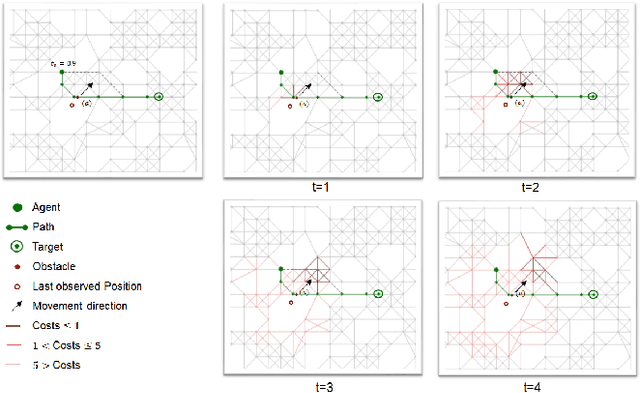
Abstract:Autonomous agents such as self-driving cars or parcel robots need to recognize and avoid possible collisions with obstacles in order to move successfully in their environment. Humans, however, have learned to predict movements intuitively and to avoid obstacles in a forward-looking way. The task of collision avoidance can be divided into a global and a local level. Regarding the global level, we propose an approach called "Predictive Collision Management Path Planning" (PCMP). At the local level, solutions for collision avoidance are used that prevent an inevitable collision. Therefore, the aim of PCMP is to avoid unnecessary local collision scenarios using predictive collision management. PCMP is a graph-based algorithm with a focus on the time dimension consisting of three parts: (1) movement prediction, (2) integration of movement prediction into a time-dependent graph, and (3) time and risk-dependent path planning. The algorithm combines the search for a shortest path with the question: is the detour worth avoiding a possible collision scenario? We evaluate the evasion behavior in different simulation scenarios and the results show that a risk-sensitive agent can avoid 47.3% of the collision scenarios while making a detour of 1.3%. A risk-averse agent avoids up to 97.3% of the collision scenarios with a detour of 39.1%. Thus, an agent's evasive behavior can be controlled actively and risk-dependent using PCMP.
* Extended version of the SIGSPATIAL '20 paper
A Flexible Pipeline for the Optimization of CSG Trees
Sep 12, 2020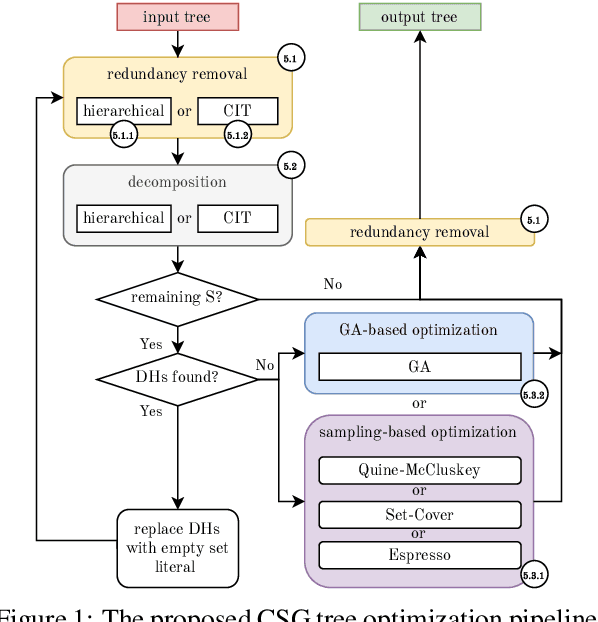
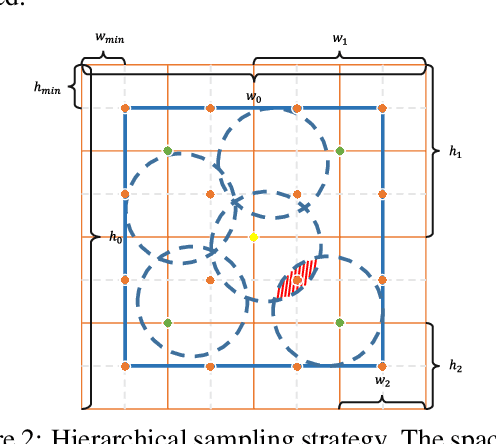

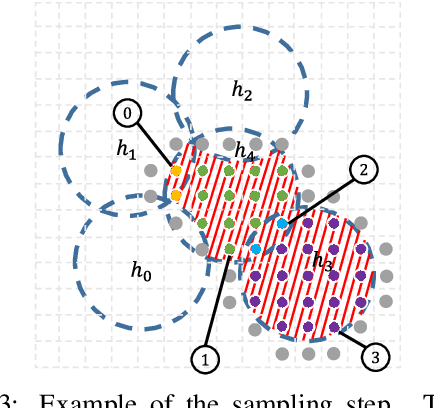
Abstract:CSG trees are an intuitive, yet powerful technique for the representation of geometry using a combination of Boolean set-operations and geometric primitives. In general, there exists an infinite number of trees all describing the same 3D solid. However, some trees are optimal regarding the number of used operations, their shape or other attributes, like their suitability for intuitive, human-controlled editing. In this paper, we present a systematic comparison of newly developed and existing tree optimization methods and propose a flexible processing pipeline with a focus on tree editability. The pipeline uses a redundancy removal and decomposition stage for complexity reduction and different (meta-)heuristics for remaining tree optimization. We also introduce a new quantitative measure for CSG tree editability and show how it can be used as a constraint in the optimization process.
Accelerating Evolutionary Construction Tree Extraction via Graph Partitioning
Aug 09, 2020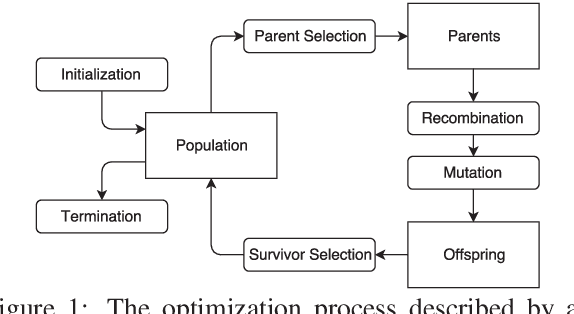
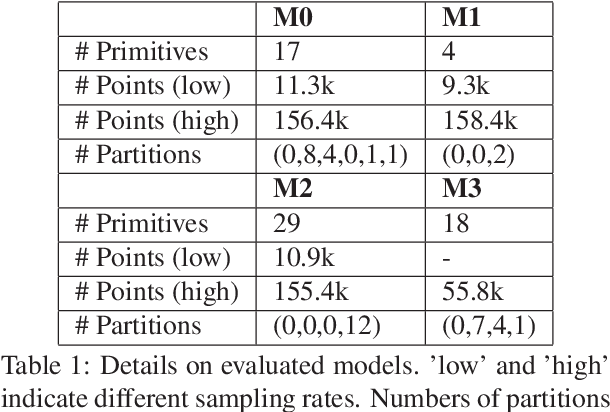


Abstract:Extracting a Construction Tree from potentially noisy point clouds is an important aspect of Reverse Engineering tasks in Computer Aided Design. Solutions based on algorithmic geometry impose constraints on usable model representations (e.g. quadric surfaces only) and noise robustness. Re-formulating the problem as a combinatorial optimization problem and solving it with an Evolutionary Algorithm can mitigate some of these constraints at the cost of increased computational complexity. This paper proposes a graph-based search space partitioning scheme that is able to accelerate Evolutionary Construction Tree extraction while exploiting parallelization capabilities of modern CPUs. The evaluation indicates a speed-up up to a factor of $46.6$ compared to the baseline approach while resulting tree sizes increased by $25.2\%$ to $88.6\%$.
Insights on Training Neural Networks for QUBO Tasks
Apr 29, 2020



Abstract:Current hardware limitations restrict the potential when solving quadratic unconstrained binary optimization (QUBO) problems via the quantum approximate optimization algorithm (QAOA) or quantum annealing (QA). Thus, we consider training neural networks in this context. We first discuss QUBO problems that originate from translated instances of the traveling salesman problem (TSP): Analyzing this representation via autoencoders shows that there is way more information included than necessary to solve the original TSP. Then we show that neural networks can be used to solve TSP instances from both QUBO input and autoencoders' hiddenstate representation. We finally generalize the approach and successfully train neural networks to solve arbitrary QUBO problems, sketching means to use neuromorphic hardware as a simulator or an additional co-processor for quantum computing.
 Add to Chrome
Add to Chrome Add to Firefox
Add to Firefox Add to Edge
Add to Edge